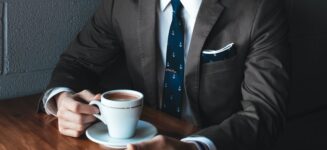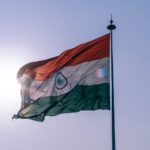Hey there folks, I’m here with something new and interesting to talk about with you. I know you all ever heard about “Cosmology”. But do you know Cosmology very well? If not, read on…….
What is Cosmology?
Throughout recorded history, there are some unanswered big questions about our universe such as how large is it? Is it finite or infinite? How old is it or will it last forever? Where in the universe are we—the center, corner or outside? Is it evolving, decaying or still being created and will ever last?
The science which finds answers to these questions about the universe is called cosmology. It is the study of the origin, evolution, and the large-scale properties of the universe altogether. Like any other field of science, it involves the formation of different theories and hypothesis about the universe. The most popular theory about the origin of the universe is big-bang theory or big bang cosmology.
Before we move deeper, here are some basic facts about our universe you should know:
- Our universe has a finite age of 13.7 billion years which was measured by WMAP (Wilkinson Microwave Anisotropy Probe) satellite.[1]
- Most acceptable model for the universe is Big Bang Model, discussed in next section.
- Even when you are sleeping, standing or whatever you are doing, you are moving pretty fast at the speed of 330 miles/sec because the galaxy is travelling at approx. speed of 305 km/sec.
- Based on the theory of General Relativity there are three possible shapes that universe may have – open, closed and flat. The most acceptable shape is flat.
- There is no center of this universe.
- When this universe was created it was dense and hot. Since then it is expanding rapidly.
- We have no idea how many stars there are in the universe, but we can guess![2]
- The universe is filled with lots of invisible stuff or substances that cannot be easily understood, which are known as dark matter and dark energy.
- No one knows, from where dark matter and dark energy come from. But probably God know!
- Our universe is made of six components – Dark Energy (69%), Dark Matter (25%), Atomic Matter (5%), Neutrinos (0.1%), Photons (0.01%), and Black Holes (0.005%)
Source: Phys.org
Big Bang Theory
It is broadly accepted and leading theory about the origin and evolution of our universe. At its simplest, it discusses that 13 to 14 billion years ago, the universe was scattered only to a few millimeters across. It was very hot and dense, but it expanded regularly and became very vast and cool, into cosmos that we know today. In essence,
“The universe started with a big bang and has since then, continued to expand. Time and space originated at the big bang.” [3]
The big bang model stands upon two fundamental pillars/principles – [4]
- General Relativity: This theory was given by Albert Einstein in 1916. Newton’s gravity was related to gravitational force and was valid for slowly moving bodies or motionless bodies, but Einstein gave the clear idea about gravity that it is supposed to be a distortion of space and time itself. John Wheeler, well-known physicist agreed and said, “Matter tells space how to curve, and space tells matter how to move.”
- The Cosmological Principle: This theory is about the distribution of matter in the universe. According to this principle, if we see the contents of the universe with a poor vision then it would appear roughly the same everywhere (homogeneous) and in every direction (isotropic). It means that distribution of matter in the universe is isotropic and homogeneous when viewed on a large scale.
Now let’s move into the depth-
The big bang theory is based on two ideas, one is general relativity and other is the cosmologic principle which are briefly discussed above. We assumed that the matter is distributed uniformly over a large scale in the universe and homogeneous, so we can figure out the matter’s corresponding gravitational effect with the help of the theory of general relativity.
Since gravity is consequence of curvature of space-time, that is equivalent to calculating the dynamics of space-time itself.
We can illustrate that the corresponding distortion of space-time can have one of three forms, where Ω0 is the density parameter –
Image Source: NASA
- The universe can be “positively” curved and finite in scale like the surface of a football.
- It can be “negatively” curved and infinite in scale like a saddle.
- It can be “flat” and infinite in scale like a football ground space.
Matter plays a major role in cosmology. With the help of following key assumptions, we can determine the geometry of universe on the basis of average density of matter:
- If the density of matter < critical density, the universe is open and infinite.
- If the density > critical density, the universe is closed and finite.
- If the density ≈ critical density, the universe is flat and infinite.
Note that the value of the critical density is approximately 6 hydrogen atoms per meter3 and the average density of matter is tantalizingly nearby to the critical density.
Hope you enjoyed this journey of the universe and got the better picture of cosmology. What are your thoughts about cosmology or origin of our universe? Have something to add here? I would love to hear you in comments.
References:
1. http://map.gsfc.nasa.gov/universe/uni_age.html
2. http://scienceline.ucsb.edu/getkey.php?key=1123
3. http://www.brighthub.com/science/space/articles/21094.aspx
4. http://map.gsfc.nasa.gov/universe/
Image Credit: NASA






 Happy Independence Day India!
Happy Independence Day India!